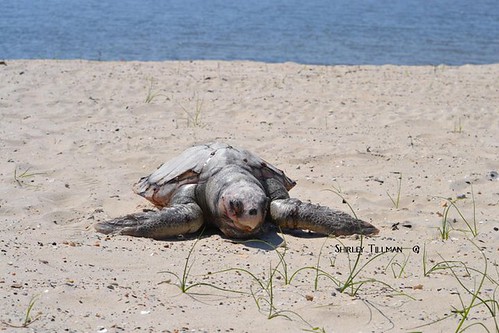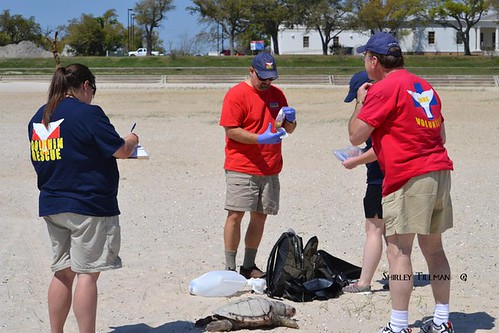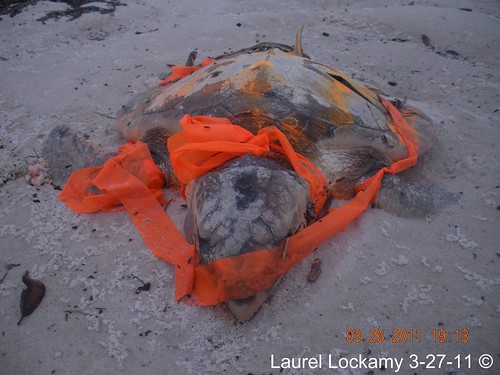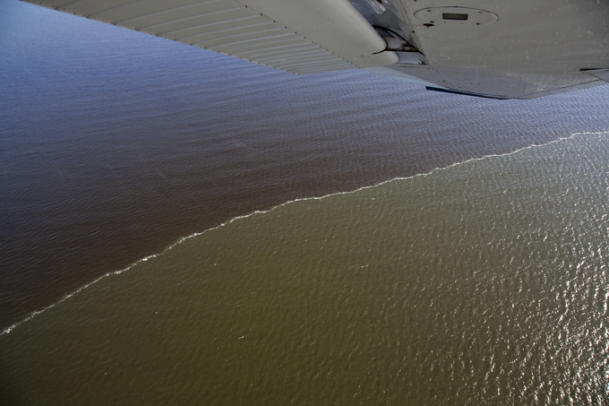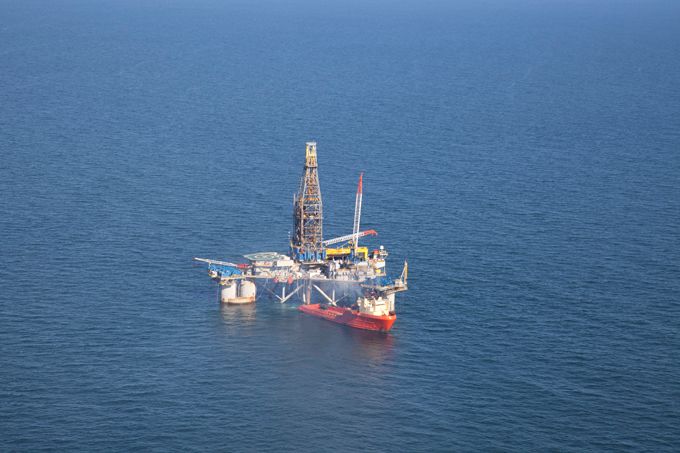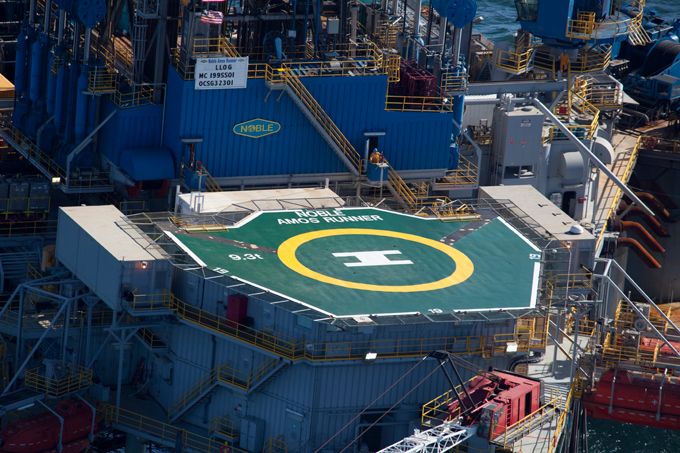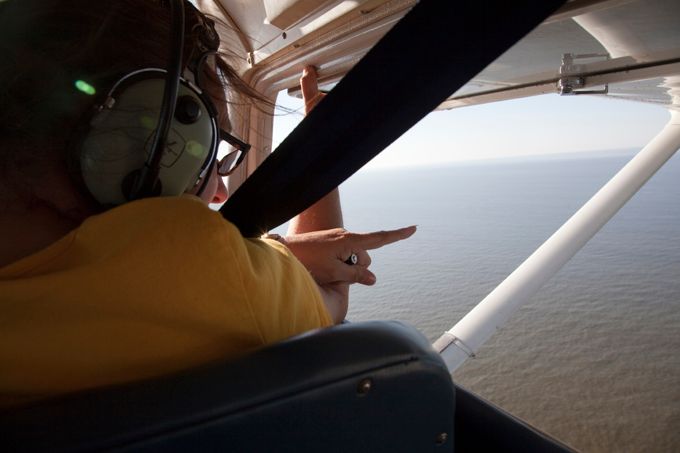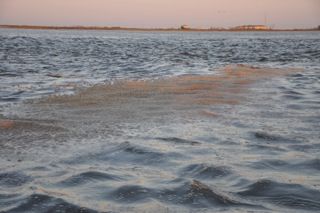Sorry to be a bringdown, but we have a NEW oil spill in the Gulf of Mexico. [/slap]
Posted: March 18, 2011 by summerburkes in The Ladies' Guide to the Apocalypse
Tags: 28th Amendment for the Separation of Corporation and State, agent orange, Alabama, algae biofuel, America, America's wetlands, apocalypse, BP, cajuns, community, corexit, current events, deepwater horizon, dolphins, evolution, fish kills, Florida panhandle, Gulf Coast, Halliburton, Hurricane Creekkeeper, John Wathen, life, Lisa Nelson, Louisiana, Mac MacKenzie, Matt Simmons, Mississippi, Monsanto, Mycoplasma mycoides, Nalco, New Orleans, news, NOLA ER, non-profit, oil spill, oilpocalypse, Paul Doom, Riki Ott, Synthetic Genomics, Transocean, W&T, white sands beaches 
March 20, 2011: Deja vu horror in Grand Isle, Louisiana
Yep … It’s called the “Matterhorn Field,” and it’s owned by W&T,
whose stock tanked Friday afternoon … they say they stopped it already, but whatever. We’ll believe it when we see it. … ::sighs heavily:: … Apparently it’s
100 miles long by 5 miles wide, even though the Coast Guard is saying it’s “3 to 100 miles long.”
[GAAAAH - ed.] Of course the Coast Guard
dismissed it at first as sediment, and then “sheen,” and then, even as Louisianans
began to weep, the Coast Guard “tested” it and said it was a mixture of
oil and sediment.
HA F**KING HA. Jerks. Having been up close enough to test Louisiana crude myself, I can vouch that the smell of oil is UNMISTAKABLE and OVERPOWERING. Especially when you’re SURROUNDED BY IT.
Under pressure, though, you can “test” water to show anything you like.
You can test water samples in such a way that your commanding officer breathes over your shoulder and hangs a picture of Matt Simmons (RIP) on the wall inside your cubicle, and then magically, you don’t see hardly any oil at all. Is how this bullshit is playing out now.
Authorities also state vaguely that the oil near the shore (unmistakably oil, to everyone who lives there & witnesses it) is from a different “well-plugging operation” than the 100-mile-long, rainbow-sheeny ribbon of “sediment” our citizen journalists photographed in the air. Well, rainbow-sheen might appear on the surface of the water if some old Deepwater oil they sank with Corexit had been dredged up, but so far that cocktail combination has just turned to muck, foam, and
snot — all rainbow-less. And as far as our i-reporters can research, no dredging projects are currently being conducted in the area —
especially none which could cause a 100-mile ribbon of rainbow sheen. But we should
give them the benefit of the doubt. Big Oil LOVES (*to rape) Louisiana. It was an
accident. They didn’t mention. For 2 days while they tried to cover it up. And are still lying about. What’s not to trust?

all ground photos (c) the heroic Mac Mackenzie of NOLA ER dot org, who rushed down to Grand Isle and took pictures on Sunday March 20
Regardless, this Spring Break, those Mycoplasma mycoides, oil-eating synthetic bacteria of Craig Venter’s, named “Synthia,” with a “computer program for a parent” — see links below — those Franken-bacteria will be going crazy at the lunch counter, sucking up oxygen in the process, which creates tons more algae that should NOT be there, in the COLD, washing up onto once-white Florida panhandle beaches like a bad sci-fi horror movie.
Conveniently, this algae, which they hope kills the Gulf of Mexico as a tourist and fishing entity forever, will be used to power the military’s vehicles with synthetic algae-based biofuel which has already been unleashed into the world’s oceans. F*@#$!)@(*&%K!! Do yall get the quantum leap of f**kery between “genetically-modified” organisms and straight-up SYNTHETIC ones? … Disaster capitalism MUST END. This constitutes MOBSTER-style f**king around with the natural order of things, courtesy the
Gangster Party. These are OUR beaches and marshes. NOT THEIRS.
And nevermind the huge sticky underwater tarmats and beach-hugging oil-slicks being served up on a platter and
stuck to the feets of Spring Breakers this week, who cluelessly bound out into the same surf that put
Paul Doom in a wheelchair. As C-130s and helicopters continue to buzz Gulf Coast houses while they spray Corexit (and copper, iron, phosphorus, and whatever else feeds that Franken-bacteria) in low-flying night missions, pre-dawn workers spirit away the
stillborn baby dolphins and other carcasses from massive fish kills, which would otherwise serve to annoy capitalists on the boardwalk who would rather pretend everything was hunky-dory, as if their lives depended on it, which they do.

all air photos (c) the heroic John Wathen, Hurricane Creekkeeper
So many people have died for this fuel — rather, for the protection of this military-industrial complex, and diametrically opposed to the interests of the flesh-and-blood people it’s meant to serve — and now, on top of the first wave of springtime FAIL and SAD HEARTBREAKING DEATH caused by the Deepwater, we have
a new oil spill with
horrifying photos to kick the PTSD back in. Woooo, Spring Break!
28th Amendment for the
Separation of Corporation and State!
(You can do it, ya know. Start in your own town. Get your city council to adopt a resolution calling for a Constitutional Amendment to end corporate personhood,
like Richmond, CA did. They’re an oil town, BTW.)
And an aside, to lighten it up with some mystery … While we were going to unconstitutional war with Libya, and Japan was desperately throwing the kitchen sink at their “virtually indestructible” nuclear reactors, a
huge BOOM-ROAR-noise set northern Florida aflitter. People could hear and feel it for 100 miles, and they thought it was an earthquake but it didn’t register as one, and it wasn’t a tornado or high winds, and it wasn’t a jet breaking the sound barrier, because it lasted for 20 minutes.
Here’s some scary home-filmed footage, and when you watch it, remember, this isn’t
Cloverdale, this is real life. It sounds an awful lot like the
Earth singing — skip to 4mins of the latter link if you want the
good kind of chills, and to be reminded of the beauty of this ride. Here’s another, of
Jupiter singing. You won’t get demoralized, will you? If you do, the terrorists have won. And we need you. The show’s about to start. Everybody’s tuning up, even the JERKS who don’t give a shit if they slowly kill all my relations in Dixie while they try to NUKE AND PAVE THE GULF FOREVER.
28th Amendment for the
Separation of Corporation and State, please. Please. ::stabs pillow::

screengrab of maritime activity March 17-ish, 2011. Sure looks like boats applying the poisonous dispersant/accelerant/anti-personnel weapon Corexit in circles, is why the eagle-eye watchdog screengrabbed it in the first place, before we knew about any of this bullshit. Say it with me: HANDS OFF OUR LAND AND WATER, F**KTARDS
(so they’ve already started to lie about the numbers … but the Gulf Coast activist community has counted about 200 aborted dolphin fetuses washed ashore in two months. The normal count by this point in the year is TWO.)
AL.com: 9 dead dolphins found since Saturday in Alabama and Mississippi (Also,
32 human miscarriages were confirmed in the Plaquemines Parish area of LA alone, including one woman whose fetus was dead inside her for a month, so it gave her toxic septicemia and she is no longer with us. So if you figure in the number of women who won’t talk about their miscarriages, and multiply that by the surface area of the Gulf Coast, no doubt hundreds of expectant mothers were crushed this year by the loss of their children-to-be. Thanks, BP! … )
Gulf Restoration Network: Are House Republicans waging a war on the Gulf? please read, and then call the White House and tell them what you think…

(c) John Wathen, Hurricane Creekkeeper. All images on this page were taken either march 19 or 20, 2011
–
The U.S. Air Force is the largest consumer of petroleum in the military. Every day, it burns more than 7.0 million gallons of oil. And where do we get that oil? In 2010, the U.S. spent more than $300 billion to import 4.2 billion barrels of oil, largely to make fuels needed to meet military and civilian transportation demands. One of the greatest threats to our economic and national security is the need to secure foreign oil. So, when President Obama confirmed a commitment to develop domestically renewable petroleum replacements from biomass, also known as bio-crude, he put a stake in the ground that alternatives are not just good for the environment, they’re critical to our national and economic security. Bio-crudes are compatible with the DoD’s current fleet of tanks, ships, and planes, which will be in use for the next 30 years.”
Detection of Viral Hemmorhagic Septicemia Virus
FOSL: Chemist: Dispersant was found in self-contained fish pond 1/2 mile from Alabama coast; all fish died — owner drained, restocked pond and second batch of fish died
ScienceNews: Gulf floor fouled by bacterial oil feast
Examiner.com: Gulf bioterrorism: Bioengineered super-bug jumping species heads global

(c) Mac Mackenzie, NOLA ER dot org
(that brings the total to EIGHT suspicious deaths by outspoken and/or Deepwater-connected scientists who wouldn’t shut up because of BP hush-money)
Planetsave.com: Newest Gulf report – Oil, soot, and dead animals on sea floor
Yahoo News: WWF – Russia, BP offshore oil drilling in protected national park
BBC News: Gulf spill’s effects ‘may not be seen for a decade’
Synthetic Genomics: BP FAQs
The initial phase of the BP/Synthetic Genomics deal will focus on identifying and describing the naturally occurring organisms and their natural biological functions that thrive in subsurface hydrocarbon formations, including petroleum, natural gas, coal, bitumen, shale, and carbon dioxide. Synthetic Genomics will utilize unique technologies including environmental genomics and multiplex microbial culturing techniques. The overarching goal is to explore and understand subsurface microbial processes. Such an understanding would enable hydrocarbon quality enhancement or increased production. BP and Synthetic Genomics will seek to jointly commercialize the bioconversion of subsurface hydrocarbons into cleaner energy products. The second phase of the BP/Synthetic Genomics program will be a series of field pilot studies of the most promising bioconversion approaches.”
Synthetic Genomics: Hydrocarbon Recovery (read this carefully and connect the dots. they are experimenting with methods to “grow” hydrocarbons in their beds. think about this in connection with the Macondo “Well from Hell,” and the reports of the first well drilled and capped months before the Deepwater rig blew. Why
did it buck and snort and blow up real good? hmmm)
Synthetic Genomics: Press Release June 13, 2007 – Synthetic Genomics, Inc. and BP to explore bioconversion of hydrocarbons into cleaner fuels
RediceCreations.com: Craig Venter — Programming algae to pump out oil (MEET DR. MOREAU)

(c) John Wathen, Hurricane Creekkeeper
–
“Rhamnolipids are surfactants, or oil dispersants, and they are not restricted by the U.S. Environmental Protection Agency (EPA). How interesting. … Rhamnolipids are secreted from Pseudomonas aeruginosa, a bacterium. In case you don’t remember the significance of Pseudomonas, let me quote Dr. Riki Ott once again:
“To make things a little scarier, some of the oil-eating bacteria have been genetically modified or otherwise bio-engineered to better eat the oil – including Alcanivorax borkumensis and some of the Pseudomonas.” — September 17, 2010; Bio-Remediation or Bio-Hazard? Dispersants, Bacteria and Illness in the Gulf .
Pseudomonas aeruginosa is a common bacterium which can cause disease in animals, including humans. The symptoms of such infections are generalized inflammation and sepsis. If such colonizations occur in critical body organs, such as the lungs, the urinary tract, and kidneys, the results can be fatal. It is also able to decompose hydrocarbons and has been used to break down tarballs and oil from oil spills.”
WEAR – ABC 3: Top stories – Coast Guard Report Says Stop Cleaning Oil
Reuters: Gulf Coast dolphin death toll rises to nearly 60 (now it’s up to more like 170, and they’re still washing up on beaches like Destin and Navarre, much to the chagrin of Spring Break-loving Boss Hoggs who consider profit above health)
FOSL: Cleanup worker having SEIZURES after diagnosed with benzene poisoning — Coughing up chunks of meat, black stuff coming out of nose & ears, lost half of eyesight
“Feeling More and More Like It Can’t Be Fixed” – by Denise Rednour, tireless citizen journalist and BP muck-filmer:
NWF Daily News: LETTER – A Serious Situation (“Recently I read an article concerning sick individuals on the Gulf Coast. On a whim, I got $300 together and went to have my blood tested. I completely expected to find out I had wasted my money and was looking in the wrong direction — but I received test results that made me sit down in shock.”)
Nola.com: BP reneges on deal to rebuild oyster beds, repair wetlands, Louisiana officials say
ProjectGulfImpact: Selling shrimp with oil in their lungs, at the Gulf State Pier in Gulf Shores. 2-22-11
FOSL: Tears: “There are no crabs, you know. There are no crabs!” says daughter of crab-processing plant owners
Yahoo News: Indigenous Ecuadoran woman humbles US oil giant
“Oil drilling into a Salt Dome: Catastrophic failure – evidence – Lake Peigneur 1980 BP Disaster”:
Nola.com: Kenneth Feinberg’s releases go too far, violate oil spill law, plaintiffs argue
GulfBlog.UGA.edu: Gulf Oil Blog — You don’t belong here. (gossip about seafloor anomalies from UGA)
OilSpillAction: PHOTO UPDATE FROM HORN ISLAND: Too many dead horseshoe crabs to count; remnant oil both on the beach surface and buried as deep as 4 feet
NY Times: Maker of controversial dispersant used in Gulf oil spill hires top lobbyists (from June ’10; still relevant)
Crooks And Liars 05/10: BP Deepwater Horizon well permitted for 18,000 ft. but drilling as deep as 25,000 ft.
Common Dreams: Friends of the Earth briefs Congress on billions in potential savings from ending polluter giveaways (“Moglen called attention to the billions that can be saved by eliminating giveaways to the oil and coal industries and other polluters. … “Being fiscally responsible and environmentally conscious are not mutually exclusive; we can save money by protecting the environment — we can save over $15 billion dollars a year by ending subsidies for fossil fuels,” Moglen said. “If funding is going to be cut from the budget, let’s do it there, and not by taking away nutritional support from little kids.”)

(c) John Wathen, Hurricane Creekkeeper
(wow, what a cavalcade of blunders)
YouTube: Animal Death Investigations – Corexit (wow, 2 cute robots talking about serious Shi’ite)
WWMT.com: Former worker says Enbridge simply covering up oil (in the Kalamazoo River)
Above Top Secret: First tests released using BP’s actual crude mixed with Corexit
MotherJones: “They were purposefully trying to deceive everyone” (FINALLY an honest scientist — watch this please — prayers for his safety!)
BP Pays a Crony (“BP’s much publicized compensation fund for Gulf oil spill victims has received over 91,000 requests for final damage settlement payments from people and businesses across the Gulf but has only issued one. Give them credit, it was for a hefty sum of $10 million dollars but it comes with one caveat; the recipient is an existing BP business partner that was paid only after BP intervened on their behalf.”)

(c) John Wathen, Hurricane Creekkeeper



